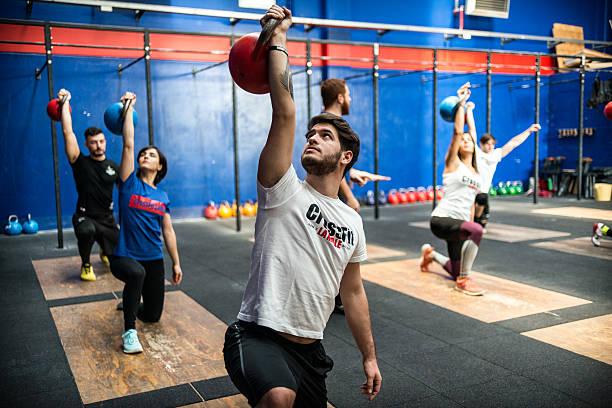Cross-training, a term often associated with elite athletes and fitness enthusiasts, is a versatile approach to fitness that holds relevance for individuals of all levels. Many people unknowingly engage in cross-training by supplementing their primary exercise routine with complementary activities. This article aims to delve into the concept of cross-training, its benefits, how to tailor it to your goals, and essential considerations for a safe and effective approach.
Understanding Cross-Training
At its core, cross-training involves incorporating diverse exercises into your fitness regimen to enhance your overall physical capabilities. While the term used to encompass a wide range of training modalities, the rise of CrossFit has popularized high-intensity workouts as a central component of cross-training. Regardless of the specific activities involved, the ultimate goal of cross-training is to improve various aspects of fitness, such as strength, power, speed, endurance, agility, and balance. These benefits extend beyond sports and have a positive impact on your everyday life.
Choosing the Right Cross-Training Activities
The key to successful cross-training is aligning your supplementary workouts with your primary fitness goals. For example, if you are preparing for a marathon, your cross-training routine will differ significantly from someone who prioritizes daily yoga sessions. To make informed choices, consider seeking guidance from a personal trainer who can help you outline your goals and design a tailored program.
Effective Cross-Training Combinations
A well-rounded cross-training routine often includes a combination of cardiovascular and strength training exercises. This combination can improve overall fitness and performance in various activities. Here are some effective cross-training combinations:
- Running and Yoga: If you’re a runner, incorporating yoga into your routine can improve flexibility, balance, and reduce the risk of injuries.
- Cycling and Strength Training: Cyclists can benefit from strength training to build leg muscles and increase power for sprints and climbs.
- Swimming and Pilates: Swimmers can enhance their core strength and stability through Pilates, which translates into better swimming posture and efficiency.
- CrossFit and Martial Arts: Combining CrossFit with martial arts can improve agility, coordination, and overall functional fitness.
- Hiking and Bodyweight Exercises: Hikers can benefit from bodyweight exercises to build strength and endurance for long treks.
Frequency and Caution in Cross-Training
While cross-training offers numerous benefits, it’s essential to exercise caution to avoid potential risks. Experts generally recommend incorporating cross-training sessions a few times per week. The ideal frequency varies based on individual factors, including age, sleep quality, and nutrition.
One potential risk of cross-training is constantly switching between different activities, which can hinder the mastery of proper form. To address this, it’s advisable to focus on a couple of regularly scheduled routines. Choose a primary activity that you can master and complement it with another workout twice a week. This approach promotes consistency and enables you to achieve optimal results.
Another risk to consider is diving too quickly into a new activity that supports your primary workout. Experts advise against lifting heavy weights or engaging in high-intensity exercises without focusing on proper form and technique. Starting gradually and seeking guidance from instructors or trainers ensures that your cross-training endeavors align with your goals without compromising safety or impeding progress.
Balanced Approach to Cross-Training
Strive for a balanced approach to cross-training by alternating between different exercises while maintaining consistency in your routines. This approach ensures that you continue to challenge your body while minimizing the risk of overuse injuries or burnout. A well-structured cross-training plan can unlock a world of possibilities for improved fitness and overall well-being.
Conclusion
Cross-training is a versatile and effective approach to fitness that can benefit individuals of all levels. By understanding your fitness goals and choosing complementary activities, you can unlock the full potential of cross-training. Remember to exercise caution, prioritize proper form, and seek guidance when needed to ensure a safe and effective cross-training experience. With the right mindset and approach, cross-training can be a game-changer in your fitness journey.
Find out the most effective cross training exercises for runners:
